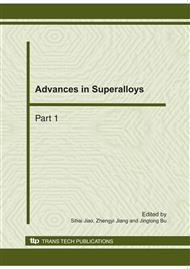p.1894
p.1898
p.1904
p.1911
p.1917
p.1921
p.1925
p.1930
p.1937
Temperature Coefficient of Resistance (TCR) Measurement Method to Evaluate Metal Process of CMOS Technology
Abstract:
Temperature Coefficient of Resistance (TCR) is the important parameter in Electromigration Test of the metal reliability. The physical dimensions of the metallization can be affected by temperature. The coefficient of thermal expansion for a sample of the metallization can be used to approximate its change in volume given and a change in temperature. An object of uniform cross section will have a resistance proportional to its length and inversely proportional to its cross-sectional area, and proportional to the resistivity of the material. TCR is a fractional change in resistance per unit change in temperature at a specified temperature. In order to get the most reliable metal lines, lower TCR value is needed. Normally lower TCR value can be obtained if the grain size of the metal line is smaller. In this study, two types of metal process flows which are known as hot and cold metal is evaluated using TCR measurement. The hot and cold metal process use the same source of AlSiCu but the preparation for deposition is a bit different in which the hot metal process used temperature setting of 300oC, while the cold metal process the temperature is set at 175oC. From the result it is found that the metallization sheet resistance is linearly increase with increasing temperature and the TCR value also decrease with smaller line widths. From the FIB micrograph picture it is found that lower process temperature will give smaller grain size and lower TCR value.
Info:
Periodical:
Pages:
1937-1940
Citation:
Online since:
October 2010
Authors:
Price:
Сopyright:
© 2011 Trans Tech Publications Ltd. All Rights Reserved
Share:
Citation:


